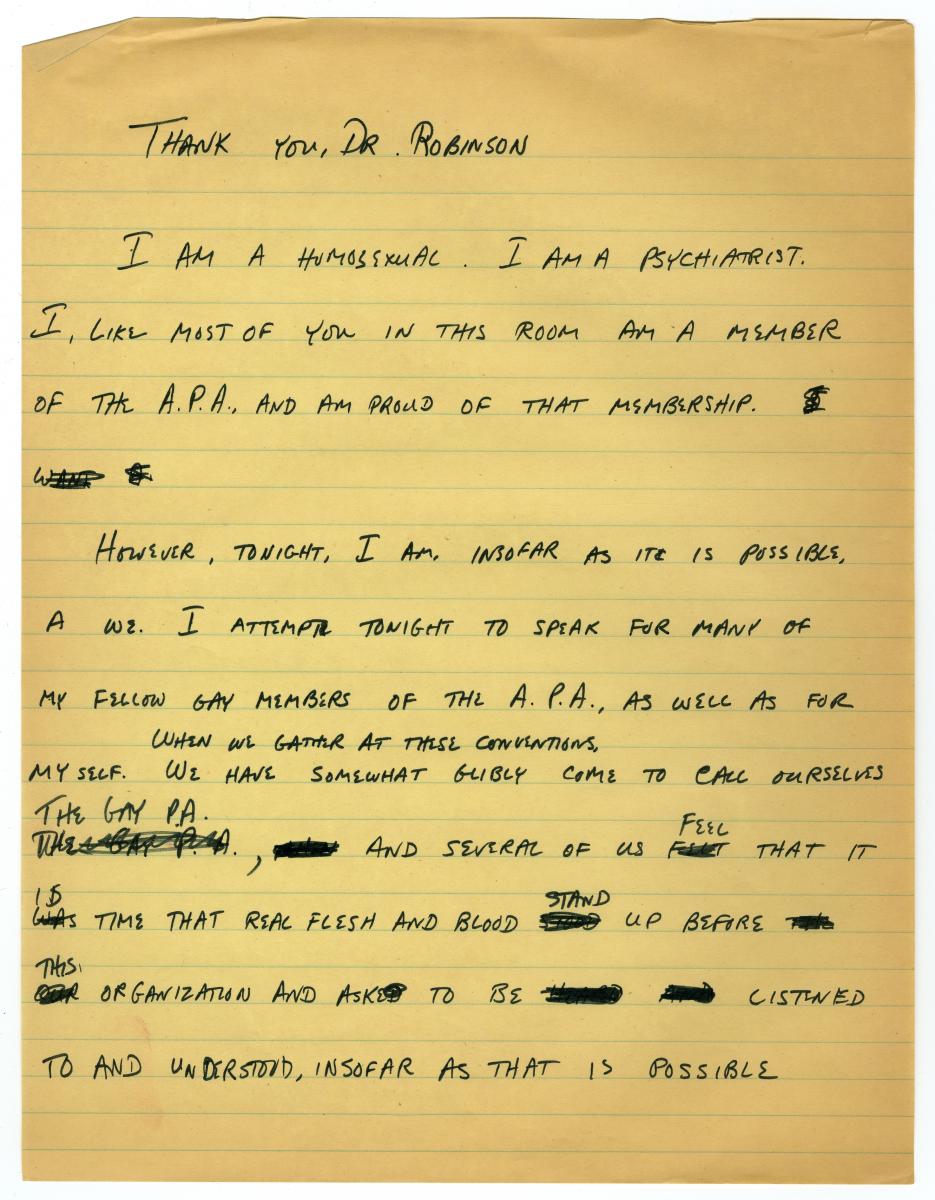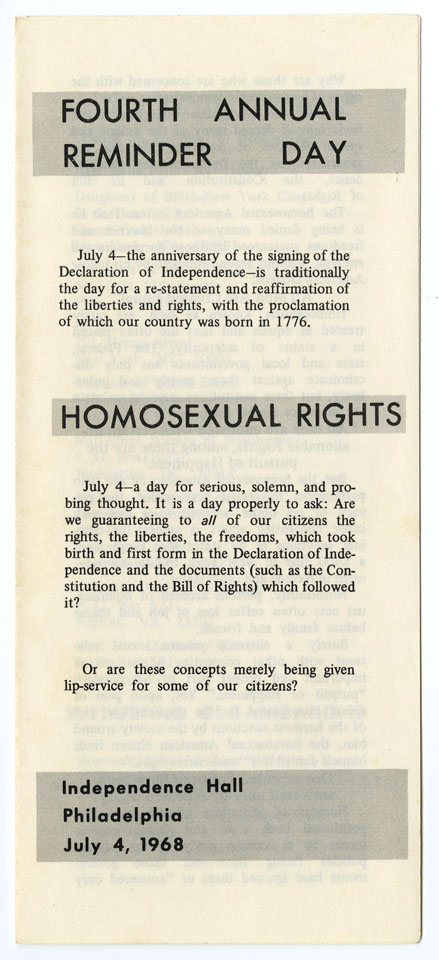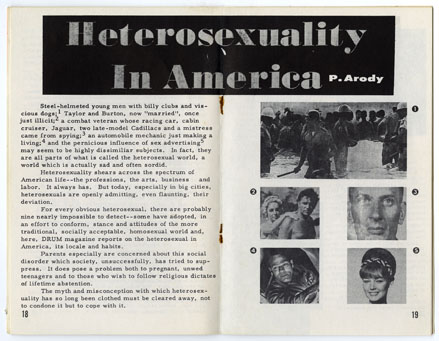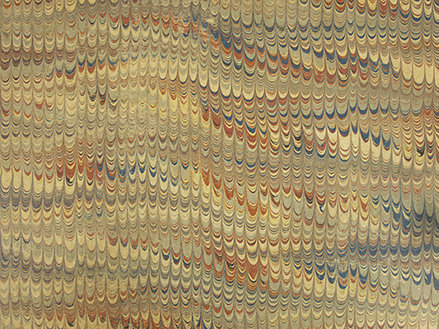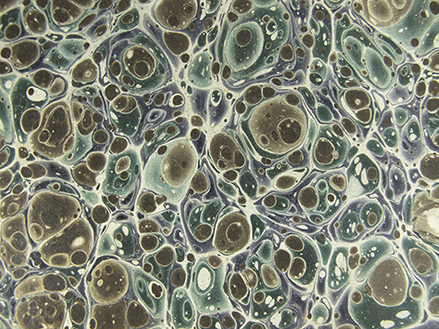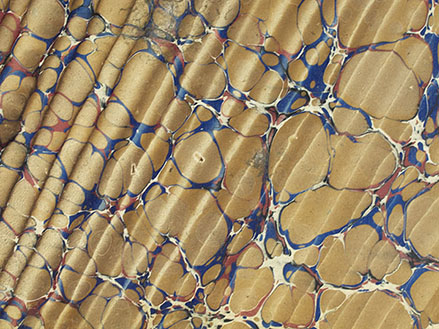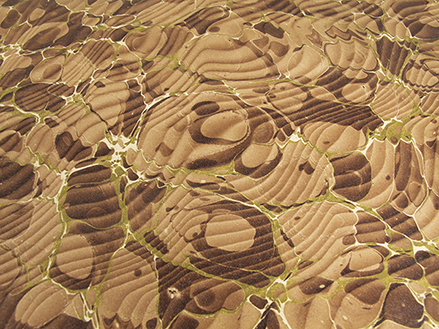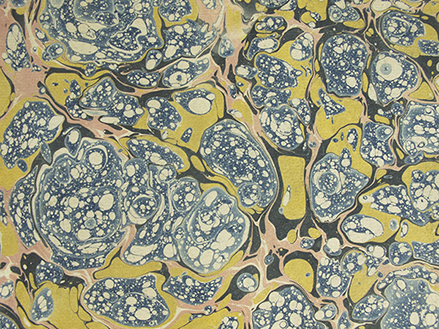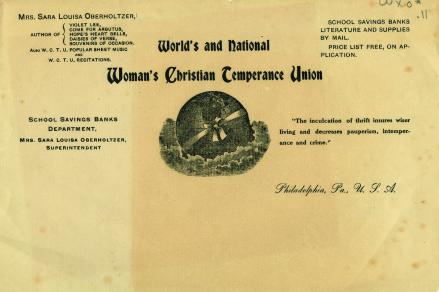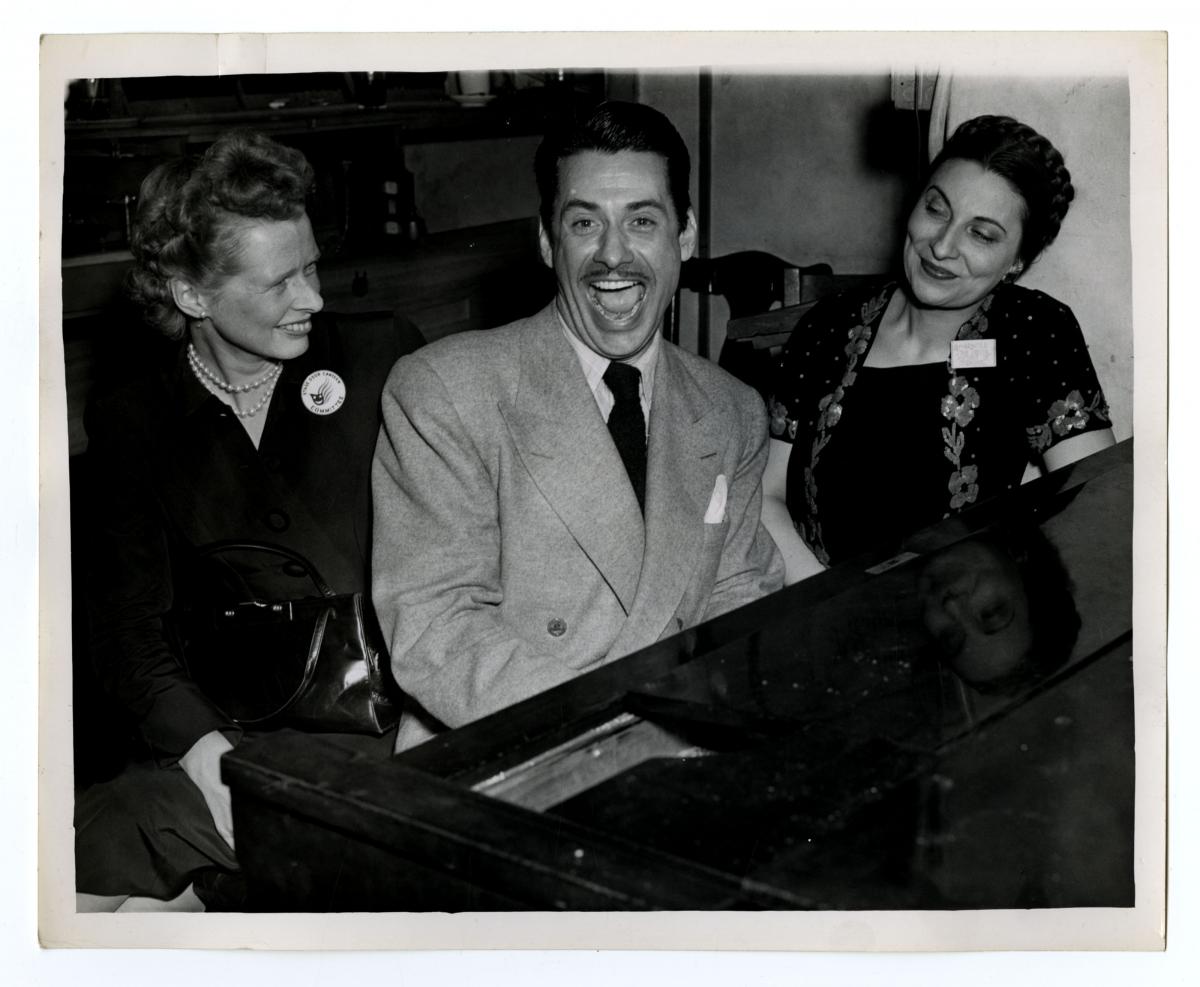
Sifting through the photographs of the Philadelphia Stage Door Canteen, an entertainment center for members of the armed forces during World War II, one can almost forget there was a war going on. Though the outside world dealt with destruction and fear, there was a small haven in the basement of the Academy of Music building where men could forget their troubles and enjoy themselves.
The Stage Door Canteen first opened its doors in June of 1943, and reportedly served 2,500,000 members of the military before it closed in October of 1945. Though it remained open for only three years, the raucous good times that were had at the Canteen are not forgotten, and the Historical Society of Pennsylvania’s Collection of World War II Papers features quite a few photographs of the Canteen.
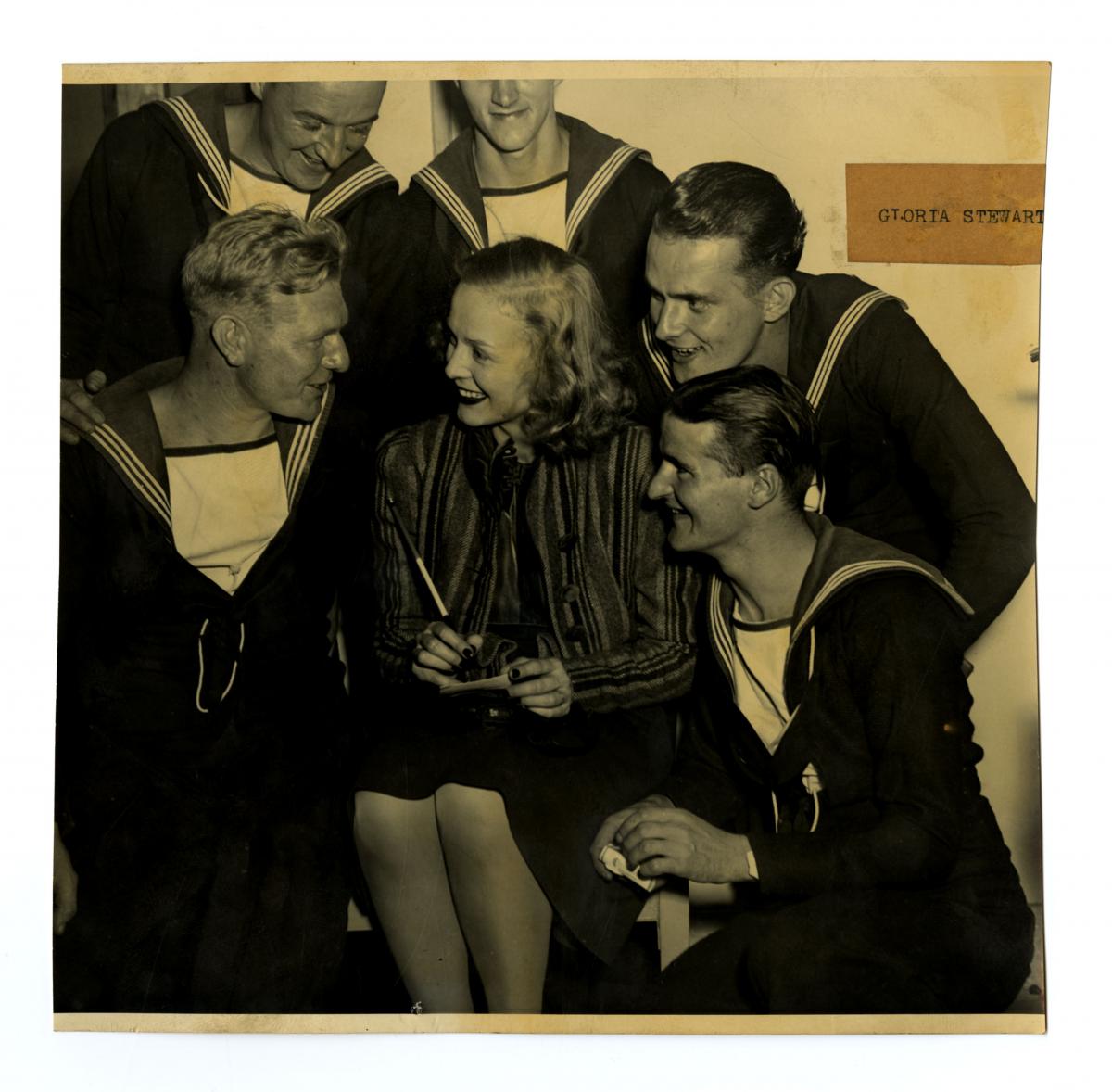 Young men in uniform can be seen posing next to celebrities and enjoying a variety of entertainers. Faces of celebrities crop up with frequency; one photograph features a moment with Duke Ellington playing alongside an orchestra while the next photograph depicts Ethel Merman in the midst of an energetic performance. The entertainment offered by the Canteen was quite diverse. Dancers, opera singers, actors, ventriloquists, and instrumentalists alike all seemed eager to perform for the boys at the Canteen. The photographs of these performances, while varied, are not altogether unexpected. Once in a while, however, the collection provides an opportunity for surprise and even amusement.
Young men in uniform can be seen posing next to celebrities and enjoying a variety of entertainers. Faces of celebrities crop up with frequency; one photograph features a moment with Duke Ellington playing alongside an orchestra while the next photograph depicts Ethel Merman in the midst of an energetic performance. The entertainment offered by the Canteen was quite diverse. Dancers, opera singers, actors, ventriloquists, and instrumentalists alike all seemed eager to perform for the boys at the Canteen. The photographs of these performances, while varied, are not altogether unexpected. Once in a while, however, the collection provides an opportunity for surprise and even amusement.
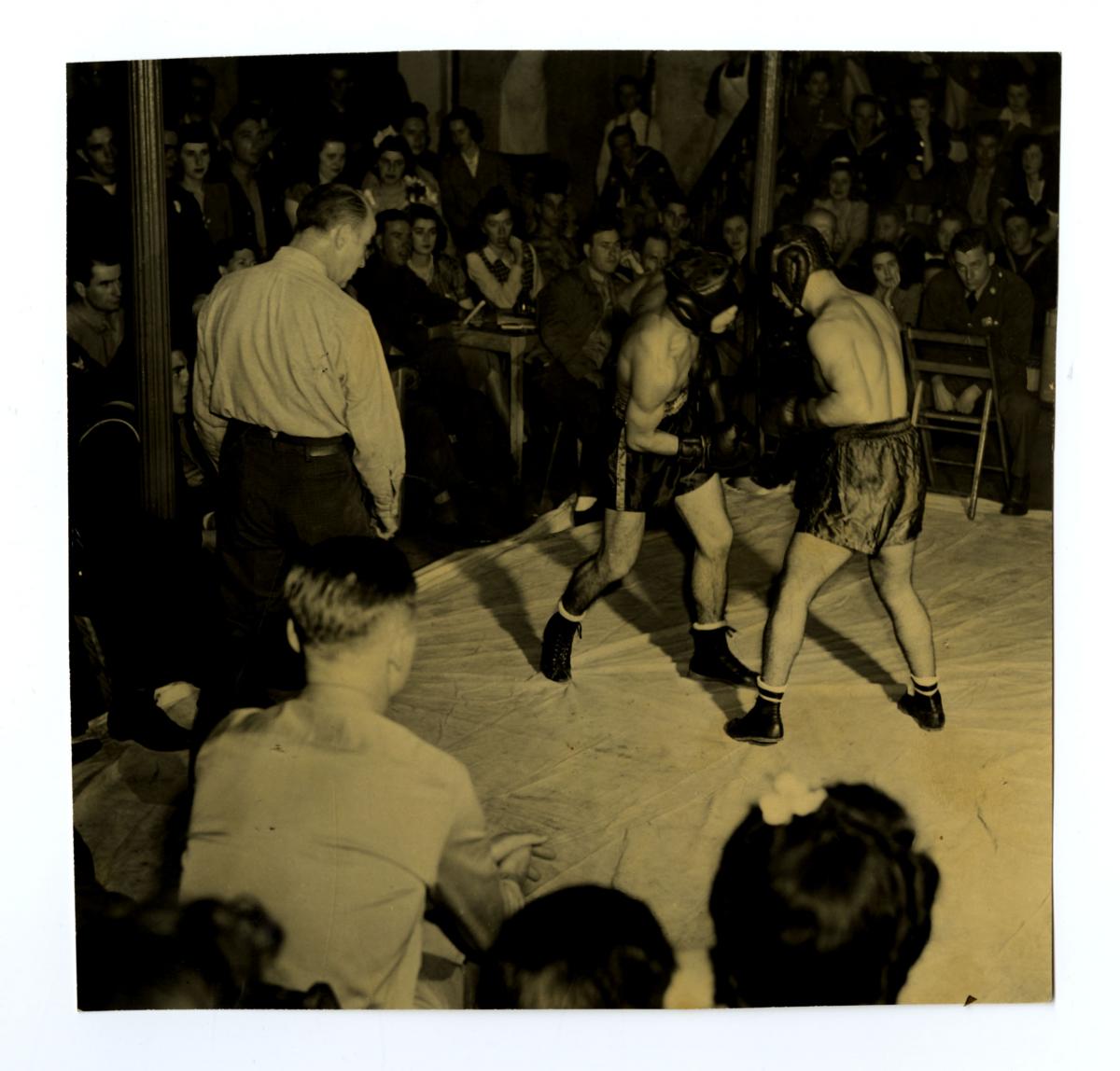
One such surprise appears in a folder full of photographs concerning theatre and vocal performances. After images of singers, mouths wide open in mid-song, and actors caught up in their dramatic performances, the last photograph shows a boxing match. Another folder includes a photograph of a performing seal. The Canteen was clearly dedicated to entertaining its guests with all sorts of events, never mind the unusual nature.

Another opportunity for amusement is found in a folder that documents a show entitled This is the Army, a musical based on the 1943 motion picture. One of the last photographs depicts a group of men wearing frilly skirts, the main subject smiling in a pained way and daintily bending his knees. An inscription informs the reader that the picture is from a show cheekily called This is the Navy.

Yet another entertaining photograph appears in a folder full of dance performances. The first few photographs capture the performance of an exotic, scantily-clad dancer. She appears to be completely immersed in her performance. The next photograph reveals that the audience, or at least one specific member of the audience, is similarly immersed in her performance. 
Eyebrows raised in interest, a young man in uniform tips his chair backward. Perhaps he was just trying to make sure the dancer had enough space to execute her dance, which apparently calls for her to be sprawled out on the floor at this moment. From his new angle, however, the young man certainly has an improved view up the loose skirt of the dancer. Whether this was an intentional result or merely a happy accident we may never know. The reactions of the rest of the audience to this vignette, ranging from uncertain horror to absolute amusement, are also worth noticing.
There are plenty more opportunities to witness the good times at the Philadelphia Stage Door Canteen in HSP’s Collection of World War II papers. Though the viewer may not completely forget the dark and serious events of World War II, he or she can certainly appreciate the small moments of happiness in an otherwise troubling time.







